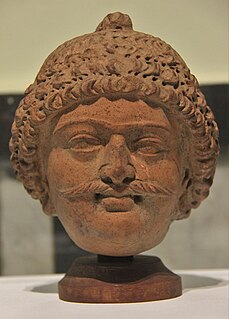
Atlanta City Hall is the headquarters of the City of Atlanta government. It was constructed in 1930, and is located in Downtown Atlanta. It is a high-rise office tower very similar to dozens of other city halls built in the United States during the same time period. Located in South Downtown, it is near other governmental structures, such as the Georgia State Capitol and the Fulton County Courthouse. The Neo-Gothic structure features many architectural details that have helped to make the building a historical landmark. It is Atlanta’s fourth city hall.

The William Gibbes House is a historic house at 64 South Battery in Charleston, South Carolina. Built about 1772, it is one of the nation's finest examples of classical Georgian architecture. It was declared a National Historic Landmark in 1970.

The Chamber of Commerce Building is located on 65 Liberty Street between Nassau Street and Broadway in the Financial District in Manhattan, New York City. The building's architect was James Barnes Baker who designed the building with a Beaux-Arts style. The building is about four stories tall built with Vermont marble and includes a terrace and a mansard roof. The first floor of the building contains the Great Hall where the walls of the hall are filled with portraits of important individuals from American history. Some of the portraits include John Cruger, the first president of the Chamber of Commerce of the State of New York, Alexander Hamilton, Ulysses S. Grant and many others.

The Bank of California Building, also known as the Durham & Bates Building and currently the Three Kings Building, is a historic former bank building in downtown Portland, Oregon, United States. Since 1978, it has been on the National Register of Historic Places. The three-story building was designed by A. E. Doyle in an Italianate style and completed in 1925. The ground floor features a two-story-high grand room with 36-foot (11 m) ceilings. The building's original owner and occupant, the Bank of California, moved out around the end of 1969 and sold the building in 1970. The building has had a succession of other owners and tenants since that time. It was last used as a bank in 1977.
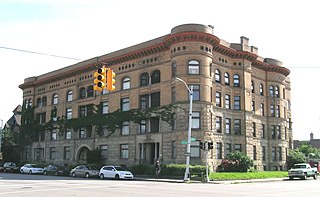
The Coronado Apartments are an apartment building located on 3751–73 Second Avenue in Midtown Detroit, Michigan. It was designated a Michigan State Historic Site in 1980 and listed on the National Register of Historic Places in 1982.

The Chamber of Commerce Building is a historic office building located at Baltimore, Maryland, United States. It is a Renaissance Revival-style red brick building five floors in height, eleven bays long and three bays wide, and built 1904-05. It was built during the rebuilding of the financial area in Baltimore following the Great Fire of 1904 and features many terra cotta decorative elements. The rebuilt structure was designed by Baltimore architect Charles E. Cassell. The original pre-fire building was designed by John Rudolph Niernsee in 1880 and was used by the Corn and Flour Exchange, which maintained a trading floor on the fifth level.
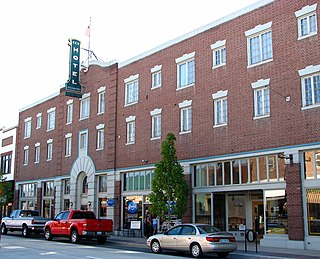
The New Redmond Hotel is a historic commercial hotel in Redmond, Oregon, United States. The hotel was built in 1928 after the original Redmond Hotel, was destroyed in a fire. It is a three-story Georgian-style brick masonry building located on 6th Street in downtown Redmond. It has been in continuous use as a commercial hotel since it first opened. Today, the New Redmond Hotel is a major landmark in downtown Redmond. Because of its importance to the history of Redmond, the New Redmond Hotel is listed on the National Register of Historic Places.

The James A. Walsh United States Courthouse, also or formerly named U.S. Post Office and Courthouse, is a historic post office and courthouse building located at Tucson at Pima County, Arizona. It was a courthouse of the United States District Court for the District of Arizona.
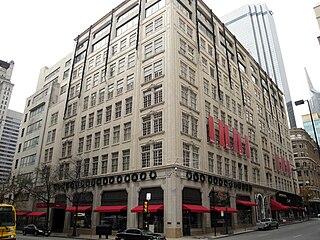
The Neiman Marcus Building is a historic commercial structure located in the Main Street District in downtown Dallas, Texas (USA). The structure, is the corporate headquarters and flagship store of Neiman Marcus. It is the last of the original department stores still serving downtown Dallas. The building is listed on the National Register of Historic Places as a contributing property of the Dallas Downtown Historic District.

The Elks Lodge No. 1353 is a historic building located in Casper, Wyoming. It was built in 1922 and listed on the National Register of Historic Places in 1997.

The Lee County Courthouse, also known as the South Lee County Courthouse and the U.S. Post Office and Courthouse, is a historic building located in Keokuk, Iowa, United States.

The Poweshiek County Courthouse in Montezuma, Iowa, United States, was built in 1859. It was individually listed on the National Register of Historic Places in 1981 as a part of the County Courthouses in Iowa Thematic Resource. In 2012 it was listed as a contributing property in the Montezuma Downtown Historic District. The courthouse is the second building the county has used for court functions and county administration.

The Dallas County Courthouse in Adel, Iowa, United States was built in 1902. It was individually listed on the National Register of Historic Places in 1973, and is a part of the County Courthouses in Iowa Thematic Resource. In 2009 it was included as a contributing property in the Adel Public Square Historic District. The current structure is the fourth building to house court functions and county administration.
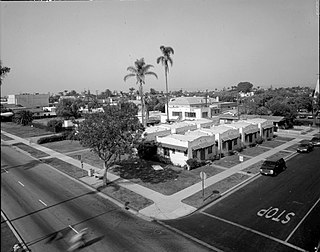
Heilman Villas are located at the corner of Seventh Street and Orange Avenue in Coronado, California and consist of 10 standalone bungalows and one 2-story duplex. The duplex and 6 of the bungalows face a central courtyard which faces Orange Ave. The other 4 bungalows face 7th St.

The Old Masonic Hall in Louisville, Mississippi, also known as Community House, and as Chamber of Commerce, is a historic building built in 1851. It was listed on the National Register of Historic Places in 1994 and was designated a Mississippi Landmark in 2007. It is a notable example of Greek Revival style architecture.
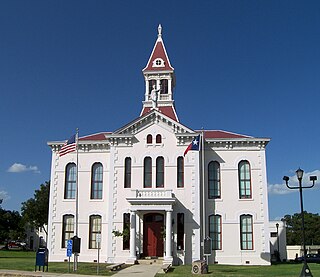
The Wilson County Courthouse and Jail are located in Floresville, Texas. They were added to the National Register of Historic Places in Texas in 1978 and the courthouse as a Recorded Texas Historic Landmark in 1984.

Main Street Methodist Church, now known as the Main Street United Methodist Church, is a historic Methodist church located at Danville, Virginia. It was built between 1865 and 1873, and is a scored stucco over brick, Romanesque Revival style porch. It features an elaborate 87 feet (27 m) tall, corner bell tower that dates from an 1890-1891 church enlargement and remodeling. A complementary flanking educational building was added in 1923. It is known locally as the "Mother Church of Methodism in Danville."

The Phoenix Hotel is a historic hotel in Waycross, Georgia, built about 1890. It is a three-story brick building that occupies a 200 by 111 feet block of the city. Businesses occupied the first floor, which has been modernized, but the other two floors retain their original configuration. The building originally had two stories and the third floor was added in 1913. It is near the train depot and catered to travelers. It was added to the National Register of Historic Places in 1986.

Lowell Commercial Historic District is a national historic district located at Lowell, Lake County, Indiana. The district encompasses 28 contributing buildings, 1 contributing site, and 1 contributing object in the central business district of Lowell. It developed between about 1870 and 1952, and includes notable example of Italianate, Queen Anne, Romanesque Revival, Bungalow / American Craftsman, and Art Deco style architecture. Notable buildings include the Roberts Building (1948), Colfax Lodge (1898), Bacon House, Lowell National Bank (1903), Lowell Town Hall (1922), and Lowell Carnegie Library (1920).

